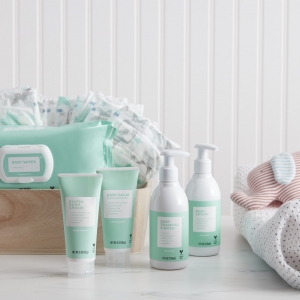Karen McIntyre, Editor06.05.19
In recent months, many of the world’s largest makers of feminine hygiene products have launched new products or product lines featuring natural or organic raw materials. Among them are tampon maker o.b. which has provided its customers with a new choice—one that is 100% organic cotton—and Procter & Gamble with the launch of “Pure” versions of its Tampax and Always brands.
These are just the latest in a string of new feminine hygiene products—from brands both big and small—that are giving women new “natural” choices for menstrual care. These new products are responding to a new awareness of what exactly goes into feminine hygiene products, a trend that has gained enough traction to get the attention of at least some state governments.
While the U.S. does not have a legal requirement for feminine hygiene products or other nonwoven-based product ingredients on the package in any form, in the past six months, four states have introduced bills that would require manufacturers of feminine hygiene products to list ingredients found in their products on the packaging. The specifics of each of these bills differ, depending on state. New Jersey, New York and Pennsylvania all would require the listing of ingredients found on the products with composition levels, while a bill introduced in Virginia identified specific ingredients that, if present in a product, would have to be listed on the label. There is also a bill in New York that would require disclosure of ingredients found in baby diapers on packaging.
As more states look toward labeling requirements, and as these measures potentially expand to the federal level, makers of feminine hygiene products will be under pressure to disclose ingredients on packaging, meaning there will be changes in how they do business and source materials.
And, hygiene is not the only market for nonwovens being influenced by ingredient transparency. In fact, consumers are more interested in ingredients in all aspects of their daily lives, so much so that the Grocery Manufacturers Association’s SmartLabel Program, launched a few years ago to allow consumers to use their smartphones to learn more about products at the point of purchase, already contains information on more than 40,000 products.
This program is also compliant with state legislature that has already been enacted in New York and California and is under review by many other states. This has led major makers of household cleaning products, like wipes, to announce full disclosure of the ingredients they use to make their products.
The impact of transparency and the demand for safer ingredients is well documented in this month’s feature, Ingredient Trends Shape Household Cleaning Market, on page 30. As household product companies like Clorox and SC Johnson gain transparency, they have also focused on new product introductions touting safer and more sustainable ingredient choices and more Earth-friendly substrates for wipes.
It sounds like this is just the beginning.
Karen McIntyre
Editor
kmcintyre@rodmanmedia.com
These are just the latest in a string of new feminine hygiene products—from brands both big and small—that are giving women new “natural” choices for menstrual care. These new products are responding to a new awareness of what exactly goes into feminine hygiene products, a trend that has gained enough traction to get the attention of at least some state governments.
While the U.S. does not have a legal requirement for feminine hygiene products or other nonwoven-based product ingredients on the package in any form, in the past six months, four states have introduced bills that would require manufacturers of feminine hygiene products to list ingredients found in their products on the packaging. The specifics of each of these bills differ, depending on state. New Jersey, New York and Pennsylvania all would require the listing of ingredients found on the products with composition levels, while a bill introduced in Virginia identified specific ingredients that, if present in a product, would have to be listed on the label. There is also a bill in New York that would require disclosure of ingredients found in baby diapers on packaging.
As more states look toward labeling requirements, and as these measures potentially expand to the federal level, makers of feminine hygiene products will be under pressure to disclose ingredients on packaging, meaning there will be changes in how they do business and source materials.
And, hygiene is not the only market for nonwovens being influenced by ingredient transparency. In fact, consumers are more interested in ingredients in all aspects of their daily lives, so much so that the Grocery Manufacturers Association’s SmartLabel Program, launched a few years ago to allow consumers to use their smartphones to learn more about products at the point of purchase, already contains information on more than 40,000 products.
This program is also compliant with state legislature that has already been enacted in New York and California and is under review by many other states. This has led major makers of household cleaning products, like wipes, to announce full disclosure of the ingredients they use to make their products.
The impact of transparency and the demand for safer ingredients is well documented in this month’s feature, Ingredient Trends Shape Household Cleaning Market, on page 30. As household product companies like Clorox and SC Johnson gain transparency, they have also focused on new product introductions touting safer and more sustainable ingredient choices and more Earth-friendly substrates for wipes.
It sounds like this is just the beginning.
Karen McIntyre
Editor
kmcintyre@rodmanmedia.com





